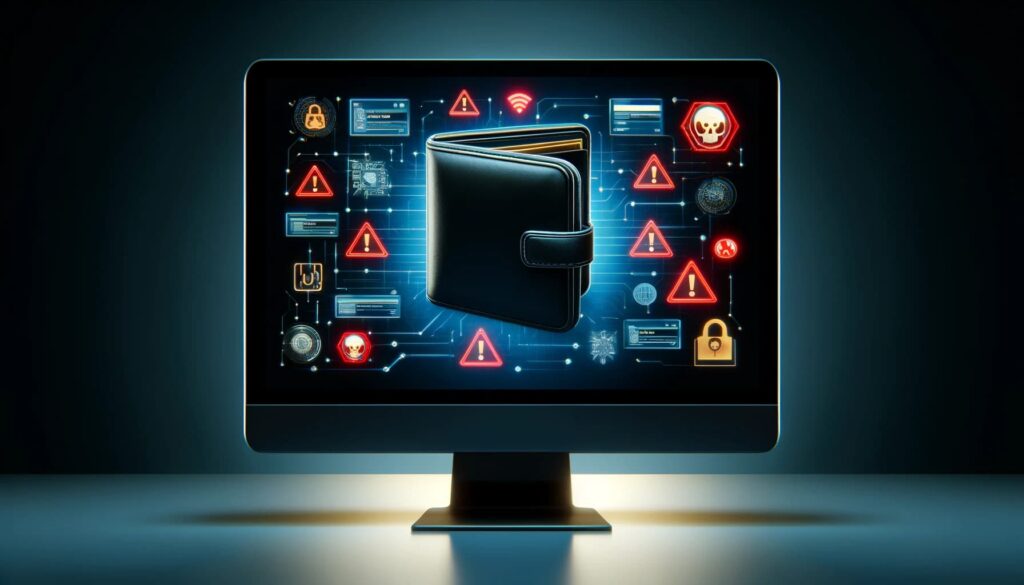Multi-Signature Wallet Benefits
Unlock the Power of Security: Exploring Multi-Signature Wallet Benefits in our latest blog post. In the world of digital assets, safeguarding your funds is paramount, and multi-signature wallets emerge as a beacon of trust and resilience. But what sets them apart from traditional single-signature wallets? Join us as we delve into the realm of multi-signature wallets, uncovering their unparalleled benefits in mitigating risks and enhancing security. From distributed control to redundancy, we'll navigate through the features that make multi-signature wallets a must-have for savvy cryptocurrency enthusiasts. Let's embark on this journey together and fortify your digital wealth like never before.
Explanation of multi-signature wallets
Multi-signature wallets are a type of cryptocurrency wallet that require multiple private keys to authorize transactions. These wallets employ a mechanism called digital signatures to ensure the security and integrity of the transactions.

In a traditional single-key wallet, a user can access and control their funds by simply using their private key. However, multi-signature wallets improve security by requiring more than one private key to approve a transaction. This means that even if one private key is compromised or lost, the funds remain secure as a thief would require access to multiple private keys.
Different key combinations can be used in multi-signature wallets, depending on the desired level of security. For instance, a 2-of-3 setup would require any two out of three private keys to authorize a transaction, while a 3-of-5 setup would require any three out of five private keys. The flexibility in choosing the key combinations allows users to customize their security levels according to their preferences.
By utilizing multi-signature wallets, users can enhance the security of their funds. The decentralized nature of private keys among different individuals or devices significantly reduces the chances of a single point of failure. Moreover, multi-signature wallets provide protection against various attack vectors such as key theft, hacking, or fraud, making them an ideal choice for those seeking maximum security for their cryptocurrency holdings.
Importance of security in the crypto space
In the crypto space, security is of utmost importance due to the risks faced by cryptocurrency investors. The decentralized and borderless nature of cryptocurrencies has attracted various malicious actors, making them vulnerable to hacking, phishing, and scams. Therefore, having secure storage solutions is crucial to protect one's crypto assets.
Investors face numerous risks, such as exchange hacks, where hackers gain unauthorized access to centralized platforms and steal users' funds. Additionally, phishing attacks lure investors into providing their private keys or seed phrases, enabling attackers to access their wallets and transfer funds without consent. Moreover, there are numerous fraudulent projects and scams in the crypto space, where investors may lose their investments if they fall victim to these schemes.
To address these risks, multisignature wallets offer a valuable solution by eliminating the single-point of failure risk. Multisignature wallets require multiple signatures to authorize transactions, minimizing the risk of a single compromised key leading to unauthorized transfers. By distributing the signing authority across multiple parties, the security of crypto assets is significantly enhanced.
Furthermore, hardware wallets play a crucial role in keeping crypto assets safe. These physical devices store private keys offline, providing an added layer of security against online threats. With hardware wallets, users can securely store, send, and receive cryptocurrencies without exposing their private keys to potential attackers.
Security is of utmost importance in the crypto space to protect investors from various risks. By utilizing secure storage solutions like multisignature wallets and hardware wallets, investors can significantly reduce the chances of falling victim to hacks, scams, and other forms of malicious activities. Safeguarding crypto assets is essential for maintaining trust and ensuring the long-term viability of the cryptocurrency ecosystem.
Benefits of Multi-Signature Wallets
Multi-signature wallets have gained significant popularity in the world of cryptocurrencies due to the enhanced security and peace of mind they offer to users. In a world where cyber threats and hacking attempts are a constant concern, the use of multi-signature wallets has emerged as a vital tool to protect digital assets. By requiring multiple private keys or signatures to authorize transactions, these wallets provide an additional layer of protection against unauthorized access and potential loss of funds. Moreover, multi-signature wallets facilitate collaboration and shared control, making them an ideal choice for businesses and organizations that require multiple individuals to authorize transactions. In this article, we will delve into the numerous benefits offered by multi-signature wallets, including heightened security, increased transparency, reduced risk of theft, and improved trust in digital asset management.
Enhanced Security
Multisig wallets provide enhanced security by requiring multiple signatures for transactions, thereby reducing the risk of unauthorized access and private key compromise. Unlike traditional single-signature wallets, which only require one signature to authorize a transaction, multisig wallets enforce the need for multiple signatures to proceed with any transaction.
This added layer of security makes it significantly harder for hackers or malicious actors to compromise funds held within a multisig wallet. In order to gain access to these funds, they would need to obtain multiple keys, each belonging to a different signatory. This significantly decreases the likelihood of unauthorized access and provides an additional buffer against private key compromise.
Moreover, multisig wallets offer increased protection in comparison to single-signature wallets by reducing reliance on a single device or individual. If a single device or private key is lost or compromised, it can result in a complete loss of funds with single-signature wallets. However, with multisig wallets, the presence of multiple keys allows for a backup option. Even if one key is lost, the remaining signatories can still access and manage the funds, minimizing potential risks.
Multisig wallets enhance security by implementing multiple signatures for transactions, reducing the risk of unauthorized access and compromising private keys. They offer increased protection compared to single-signature wallets, as hackers would need to obtain multiple keys to compromise funds. Additionally, multisig wallets lessen the risk of relying on one device and provide a backup option in case of lost private keys.
Protection against unauthorized access
Multisig wallets provide enhanced protection against unauthorized access by requiring multiple authorized keys to transact and access funds. This reduces the risk of unauthorized individuals gaining control over the wallet.
The setup options for multisig wallets typically involve a certain number of keys out of a total set, known as the "m-of-n" scheme. For example, a 2-of-3 setup requires two out of the three authorized keys to authorize a transaction. Similarly, a 3-of-5 setup would require three authorized keys out of the five available.
The advantage of using multisig wallets is that even if one key is lost or compromised, the funds held within the wallet remain secure. This means that if a key is stolen or forgotten, the remaining authorized keys can still be used to access and transact with the funds. It eliminates the risk of permanently losing funds due to the loss of a single key.
By implementing a multisig wallet, individuals can ensure that the risk of unauthorized access and control over their funds is significantly reduced. It adds an extra layer of security because an attacker would need to compromise multiple authorized keys simultaneously to gain control, making it significantly more difficult for them to do so.
Overall, multisig wallets safeguard against unauthorized access by requiring multiple authorized keys to transact and access funds, effectively reducing the risk of unauthorized individuals gaining control.
Lower risk of funds being stolen
In today's increasingly digital world, the risk of funds being stolen is a major concern for individuals and organizations alike. Whether it is through hacking, fraudulent activities, or phishing attempts, financial security is paramount. However, there are measures and technologies in place that can significantly lower the risk of funds being stolen. By employing robust security protocols, utilizing secure payment gateways, and promoting awareness among individuals, it is possible to safeguard funds and ensure greater peace of mind. This article will explore some effective strategies and practices for reducing the chances of funds being stolen, and how these can be implemented in various personal and business settings.
Distributed Control
Distributed control refers to the decentralization of decision-making authority and security management within a system, particularly in the context of multisig wallets. In a multisig wallet, multiple parties are required to approve transactions, and each party holds a unique private key to sign these transactions.
Typically, shared control is an alternative approach where all parties hold the same private key, allowing any one of them to execute transactions without requiring the approval of others. However, this centralized model poses inherent security risks. If a malicious party gains access to the shared key, they can maliciously manipulate funds without detection or accountability.
In contrast, distributed control mitigates these risks by distributing the private keys among multiple entities. Each party's private key is required to validate and approve transactions, ensuring that no single entity has unilateral control over the wallet. This significantly enhances security as all parties must collectively agree on the transaction, leaving less room for malicious actions.
Moreover, distributed control enhances the decision-making process by making it more robust and transparent. In shared control, an individual could make decisions autonomously without input or consensus from others. However, distributed control necessitates collaborative decision-making, as each party's approval is required for transactions. This ensures that transactions are thoroughly reviewed, reducing the likelihood of errors or fraudulent activities.
Distributed control in multisig wallets provides increased security by distributing decision-making authority and individual private keys among multiple parties. It differs from shared control by preventing the concentration of power and enhancing transparency and accountability in the decision-making process.
Multiple parties involved in transactions
In today's complex business environment, transactions often involve multiple parties working together to achieve common objectives. To streamline such processes and ensure secure and transparent operations, organizations often employ the use of multisig wallets.
Multisig wallets offer an ideal solution for organizational setups as they require the consent of two or more parties before any business decision can be executed. This ensures that no single individual has the authority to unilaterally transfer funds without the approval of others. By leveraging multisig wallets, organizations can prevent any fraudulent or unauthorized activities as each transaction is subject to the agreement of multiple parties.
In addition to the consent requirement, multisig wallets also provide a robust framework for voting rights. Organizations can set up policies where certain transactions, such as large fund transfers or significant business decisions, require a predetermined percentage of votes from the involved parties. This empowers each party with an equal say in the decision-making process, promoting a democratic approach and preventing any undue influence.
The use of multisig wallets in organizational setups ensures that the involvement of multiple parties in transactions is properly accounted for. By requiring the consent of two or more parties and incorporating voting rights, multisig wallets provide a secure and trustworthy platform for conducting business activities. These wallets are indispensable tools for organizations seeking to foster transparency, accountability, and equal participation among their stakeholders.
Reducing the risk of a single point of failure
Reducing the risk of a single point of failure is a crucial aspect of designing and managing systems in various industries. A single point of failure refers to a component, system, or process that, if it were to fail, would result in a complete halt or significant disruption of operations. This vulnerability can have severe consequences, ranging from financial losses to compromising safety and customer satisfaction. To mitigate this risk, organizations employ various strategies, such as redundancy, fault-tolerant architectures, diversification, and the implementation of backup systems. These measures aim to ensure that if one component or process fails, there are alternative mechanisms in place to maintain functionality. By minimizing the reliance on a single point of failure, businesses can enhance resilience, minimize downtime, and safeguard critical operations, ultimately leading to improved performance, customer trust, and overall success.
Escrow Transactions
Escrow transactions are a method of ensuring that funds are safely held by a neutral third party until certain conditions are met. This concept is commonly used in various financial and legal transactions to provide security and trust between the parties involved.
In an escrow transaction, a third party, often a trusted entity such as a bank or a law firm, is responsible for holding the funds until certain predetermined conditions are fulfilled. These conditions may include the completion of a service, the delivery of goods, or the resolution of a dispute.
One way to facilitate escrow transactions is through the use of a 2-of-3 multi-sig wallet. This type of wallet requires the involvement of three parties: the buyer, the seller, and the escrow agent. To initiate the transaction, the buyer and the seller both contribute funds to the wallet. However, instead of requiring both parties' signatures to release the funds, the wallet is designed to require the signatures of any two out of the three participants.
This setup allows for the participation of a third party, the escrow agent, in the transaction. If a dispute arises between the buyer and the seller, the escrow agent can act as a mediator and decide which party's signature should be included in the transaction. This helps to resolve disputes and ensures fairness in the release of funds.
Overall, escrow transactions, facilitated by a 2-of-3 multi-sig wallet, provide a secure and trustworthy way to handle financial transactions. By involving a third party and setting conditions for fund release, these transactions offer protection to all parties involved and minimize the risk of fraud or disputes.
Ensuring trust between parties in a transaction
In any transaction, trust plays a vital role as it ensures that both parties fulfill their obligations and have confidence in the process. Without trust, there is a higher likelihood of disputes and the potential for one party to act in bad faith. To enhance trust, the use of multisig wallets and a third-party arbitrator can be valuable tools.
Multisig wallets are designed to require multiple signatures for any transaction to be validated. This adds a layer of security and trust by ensuring that the funds can only be accessed when multiple parties agree. For example, in a two-out-of-three (2-of-3) multisig wallet, two signatures are needed from the three parties involved. This helps mitigate the risk of one party attempting to control the transaction alone or acting dishonestly.
Furthermore, utilizing a third-party arbitrator can provide an impartial and knowledgeable mediator in the event of a dispute. This arbitrator can review the transaction details, evidence, and any relevant documentation to make a fair judgment. By having a neutral party involved, both parties can have confidence in the fairness of the resolution.
Mistrust can lead to disputes, delays, and even legal actions that can be expensive and time-consuming. However, using a 2-of-3 multisig wallet in escrow transactions can help mitigate these risks. With this setup, the buyer, seller, and a trusted third party all possess the necessary signatories to complete the transaction. This reduces the possibility of any party acting in bad faith, as no one can unilaterally control the funds without agreement from the others.
Trust is crucial in any transaction, and the use of multisig wallets and third-party arbitrators can significantly enhance it. By ensuring that multiple parties are involved in validating transactions and having a neutral mediator available, the risks of disputes and potential fraud are minimized, allowing for smoother and more secure transactions.
Safeguarding funds until conditions are met
Safeguarding funds until conditions are met is a crucial aspect of financial management that ensures the integrity of financial transactions and protects the interests of both parties involved. It involves setting up mechanisms and procedures that prevent the release or use of funds until specific conditions or requirements are fulfilled. This practice is commonly used in various contexts, including business transactions, project financing, escrow accounts, and compliance with legal and regulatory obligations. By implementing stringent measures to safeguard funds until conditions are met, organizations can mitigate risks, prevent fraud, and ensure that resources are utilized appropriately and in line with agreed-upon terms. This article will explore the importance of safeguarding funds, discuss common methods and strategies used, and highlight the key benefits it offers to individuals and businesses alike.
Lower Risk of Hacks
In our increasingly digital age, protecting ourselves from the threat of hacks has become more imperative than ever. Implementing effective measures to lower the risk of hacks is crucial to safeguard our personal information and maintain our online privacy. One of the first and most fundamental steps in this process is using strong and unique passwords for all accounts. This involves creating passwords that are difficult to guess and avoiding using the same password across multiple platforms. Additionally, enabling two-factor authentication whenever possible provides an extra layer of security by requiring users to provide a second form of verification, such as a text message or fingerprint, to access their accounts.
Regularly updating software and applications is another essential measure to lower the risk of hacks. Software updates often include patches and fixes for vulnerabilities that could potentially be exploited by hackers. By staying on top of these updates, users can significantly reduce the risk of falling victim to cyberattacks. Moreover, regular backups of data serve as a failsafe in case of a hack. By storing copies of important files and documents on external devices or in the cloud, users can recover their information even if their main system is compromised.
Lastly, implementing a reliable firewall system acts as a barrier between internal networks and the internet, effectively filtering and blocking unauthorized access. Firewalls come in both hardware and software forms, and they work by either allowing or denying traffic based on predetermined security rules.
By utilizing strong passwords, enabling two-factor authentication, regularly updating software, backing up data, and implementing a reliable firewall system, individuals can significantly lower the risk of hacks and maintain a safer digital presence.
Reduced vulnerability to hacking attacks
Reducing vulnerability to hacking attacks is crucial to maintaining the security and integrity of any system or network. Implementing robust security measures can significantly enhance protection against potential threats. One essential security measure is installing firewalls. These software or hardware-based systems act as a barrier between an internal network and external networks, filtering incoming and outgoing traffic and preventing unauthorized access.
Regularly updating software and operating systems is another important technique to reduce vulnerability to hacking attacks. Developers regularly release updates that include patches to fix security vulnerabilities. By promptly installing these updates, organizations can ensure that their systems are up to date and less susceptible to exploitation.
Using strong and unique passwords is an effective way to enhance security. Passwords should be long, complex, and a combination of letters, numbers, and special characters. Implementing multi-factor authentication (MFA) provides an additional layer of security by requiring users to provide a second form of verification, such as a fingerprint or a one-time password.
Conducting regular security audits is crucial to identify and address potential weaknesses in an organization's security infrastructure. These audits help uncover vulnerabilities and provide insights into areas that require improvement.
Employee training on best cybersecurity practices is essential to build a strong defense against hacking attacks. Training employees on how to spot phishing emails, avoid suspicious websites, and adhere to secure password practices can significantly reduce the risk of successful attacks.
By implementing these robust security measures, organizations can significantly reduce their vulnerability to hacking attacks and safeguard their systems and data from potential threats.
Mitigating the risk of losing funds to cybercriminals
One of the most critical aspects of protecting funds from cybercriminals is effective risk mitigation. By implementing various strategies, individuals and businesses can greatly enhance their security measures and reduce the likelihood of financial losses.
First and foremost, utilizing strong passwords is essential. Cybercriminals often exploit weak or easily guessable passwords to gain unauthorized access to accounts. By requiring complex passwords comprising a mixture of upper and lowercase letters, numbers, and symbols, individuals can create a strong barrier against potential breaches. Regularly updating passwords further strengthens this defense.
Another effective method is regularly updating security software. Cybercriminals continuously develop new tactics to bypass security systems, making software updates crucial. These updates often contain essential patches that address newly discovered vulnerabilities and enhance overall protection.
Implementing multi-factor authentication (MFA) further fortifies defenses. MFA requires users to provide one or more additional pieces of evidence, such as a fingerprint or a one-time code generated on a trusted device, in addition to their password. This additional layer of authentication significantly reduces the risk of unauthorized account access.
Educating employees on phishing scams is vital. Cybercriminals often utilize phishing emails, which appear to be from legitimate sources, to trick individuals into revealing sensitive information or clicking on malicious links. By training employees to identify and report phishing attempts, businesses can minimize the risks associated with these fraudulent activities.
Lastly, conducting regular security audits ensures that all security measures are up to date and effective. These audits include identifying any potential vulnerabilities, addressing them promptly, and continuously evaluating and improving security protocols.
By adopting these strategies, individuals and businesses can significantly reduce the risk of losing funds to cybercriminals. Prioritizing risk mitigation helps safeguard financial resources and protects against potential financial devastation.


